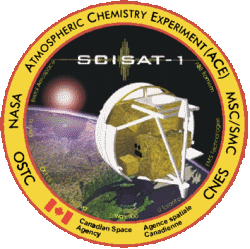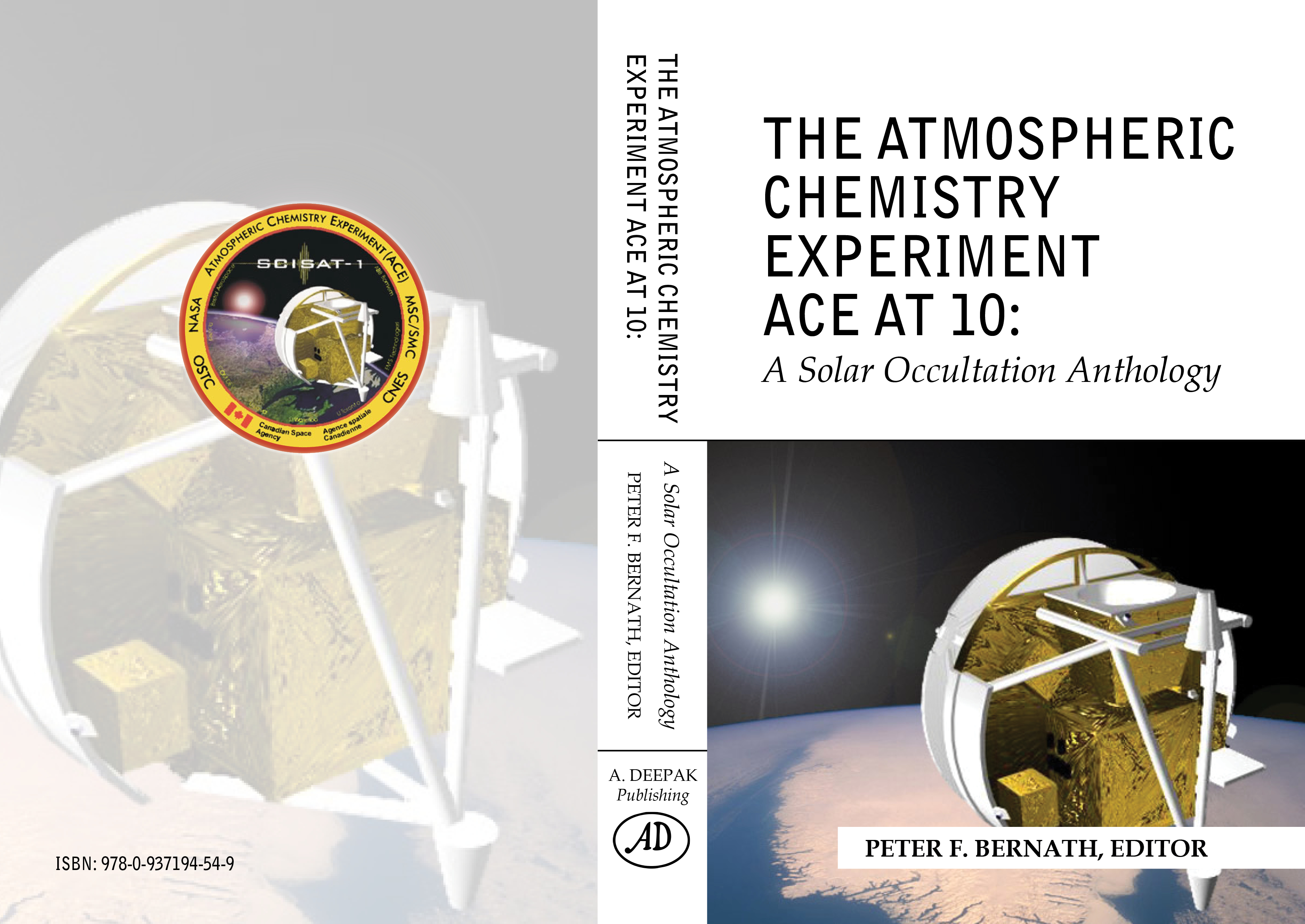The Atmospheric Chemistry Experiment
The Atmospheric Chemistry Experiment (ACE) is a satellite mission on board the Canadian satellite SCISAT, that takes measurements of the Earth's atmosphere.
The measurements consist of spectra and images that are used to investigate chemical and dynamical processes in our atmosphere, with a particular emphasis on ozone depletion in the Arctic stratosphere.
Dr. Peter Bernath from the Department of Chemistry at the University of Waterloo is the Mission Scientist, which involves the collaboration of members from several universities, industries and other organizations in Canada and around the world.
Peter Bernath email: bernath@uwaterloo.ca
January 2nd, 2024:
2023 is the 20 th year on orbit for the Canadian Space Agency’s Atmospheric Chemistry Experiment (ACE) satellite, which stands as Canada’s most successful scientific space mission. ACE was launched by NASA in August 2003 and continues to make daily measurements of atmospheric composition.Originally planned to have a two-year lifetime, ACE performs flawlessly 20 years on. This longevity allows measurement of long-term trends in the concentration of chlorine-containing molecules to monitor the success of the Montreal Protocol on Substances That Destroy the Ozone Layer. (The ozone layer protects humans from dangerous UV radiation.)
ACE uses Fourier transform infrared spectroscopy of sunlight during sunrise and sunset to determine the abundance of 46 atmospheric molecules associated with air pollution and climate change. In addition, ACE observes both sulfate aerosols from volcanic eruptions that cool the surface of the Earth, and smoke from large wildfires that alter the chemistry of the stratosphere.
All these mission data products are produced in the Chemistry Department at the University of Waterloo at the ACE Science Operations Centre (SOC). The SOC analyzes the ACE infrared spectra and distributes their data products to hundreds of users around the world.
February 9th, 2023:
ACE data appears in the 2022 Scientific Assessment of Ozone Depletion: csl.noaa.gov/assessments/ozone/2022/
December 1, 2022:
Sulfate aerosols from the Tonga volcano are detected from 60 degrees north to 60 degrees south. ACE Observations of the Tonga volcanic plume are published at: doi.org/10.1016/j.jqsrt.2023.108520
June 26, 2022: Cascadia Wildfire Webinar delivered by Peter Bernath
March 17, 2022: Wildfire smoke destroys stratospheric ozone
[PDF] Large wildfires inject smoke and biomass-burning products into the mid-latitude stratosphere, where they destroy ozone, which protects us from ultraviolet radiation. The infrared spectrometer on the Atmospheric Chemistry Experiment satellite measured the spectra of smoke particles from the “Black Summer” fires in Australia in late 2019 and early 2020, revealing that they contain oxygenated organic functional groups and water adsorption on the surfaces. These injected smoke particles have produced unexpected and extreme perturbations in stratospheric gases beyond any seen in the previous 15 years of measurements, including increases in formaldehyde, chlorine nitrate, chlorine monoxide, and hypochlorous acid and decreases in ozone, nitrogen dioxide, and hydrochloric acid. These perturbations in stratospheric composition have the potential to affect ozone chemistry in unexpected ways.
Peter Bernath, Chris Boone, Jeff Crouse, (2022), Wildfire smoke destroys stratospheric ozone, Science, 375, 1292-1295
There has been significant media interest in ACE's wildfire publication. Examples of articles written as of April 6th, 2022 can be found here.
August 13, 2013, SCISAT celebrated its 10th anniversary in orbit.
SCISAT was originally designed for a 2-year mission but has now surpassed expectations and continues to record measurements of Earth's atmosphere. To commemorate this special occasion, a tenth anniversary book has been published entitled The Atmospheric Chemistry Experiment ACE at 10: A Solar Occultation Anthology.Funding for the ACE mission is primarily provided by the Canadian Space Agency.

